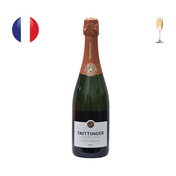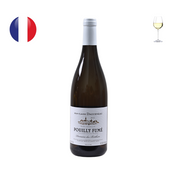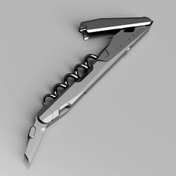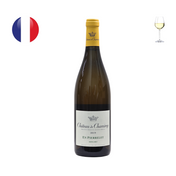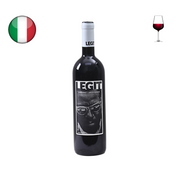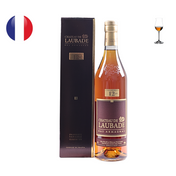The history of Castellari Bergaglio is characterized by a dedication to winemaking in the Gavi DOCG region that began in the late 1800s, with the estate being founded around 1890. The winery is currently managed by Marco Bergaglio, who represents the fourth generation of the founding family.
A significant portion of the estate’s heritage derives from La Polastra, which merged with Castellari Bergaglio to consolidate under the new brand. La Polastra's roots date back five centuries, established by Claudio Andrea Gemme's ancestors, Giuseppe and Carlo. These two mercenary soldiers settled in the Gavi area after falling in love with the land while traveling home and proceeded to plant the first vineyards, cultivating varieties including Cortese, Nebbiolo, Barbera, and Dolcetto.
The merger of the two established companies was a strategic alliance sealed by Silvia, Claudio Andrea Gemme, and Marco Bergaglio. This collaboration was crucial for combining expertise, enriching the product line, and securing complementary vineyard assets across the Gavi hills, with the wines of La Polastra continuing to enrich the Castellari Bergaglio portfolio. The operation is guided by the philosophy of maintaining an uncompromising native identity for Cortese, loyalty to the Gavi white wine terroir, and balancing established traditions with modern viticultural practice.
Location and Land Holdings
The estate is located in the Gavi DOCG appellation in southeastern Piedmont, with its headquarters and cellar based in the hamlet of Rovereto. The vineyards benefit from maritime influence provided by sea breezes originating from nearby Liguria. The total vineyard holding is around 15 hectares, all dedicated exclusively to the cultivation of the Cortese grape. The hillside vineyards are located at an altitude of approximately 250 meters above sea level.
The domain is defined by two primary terroirs that yield distinct wine styles:
- Rovereto: Near the cellar, these soils consist of white marl, which contributes freshness and high olfactory intensity to the wines.
- Tassarolo: Located in the municipality of Tassarolo, these vineyard sites are characterized by clayey soils. This composition imparts greater structure and body to the Cortese grapes grown there.
Grape Varieties and Viticulture
Castellari Bergaglio focuses solely on the Cortese grape, a native Italian white variety classified as early as 1798.
The estate's viticultural work serves as a deliberate counterpoint to the overproduction that historically risked Gavi’s reputation. The winery rejects "easier solutions" by focusing on low-yield viticulture and estate-grown fruit to maximize the uncompromising native identity of Cortese. The estate practices organic viticulture in its vineyards, utilizes solar energy , and performs hand-harvesting. Quality control is maintained by limiting standard yields to approximately 2.5 kilograms of grapes per plant.
A significant element of the estate’s heritage is the preservation of its oldest hillside vineyards in the Rovereto area, which supply the Vignavecchia wine. These are exceptional parcels, over eighty years old, containing original pre-phylloxera colonies. The vines are situated on white marl soil and benefit from a specific microclimate influenced by surrounding oak woods. To achieve wines of unique character, these specific parcels are farmed at even lower yields, down to 2 kg per plant.
Winemaking Techniques and Aging:
The winemaking approach prioritizes precision and the expression of the specific territory. Grapes are transferred immediately to the winery following harvest and undergo soft, progressive pressing to ensure the extraction of only the best part of the must. Primary alcoholic fermentation is conducted in steel tanks using selected yeasts.
Fornaci: The wine designated Fornaci undergoes a slow, temperature-controlled fermentation (18–20°C) that can extend for up to 20 days to develop the typical richness of Cortese di Gavi's aromas.
Aging: Standard still wines are bottled in the spring (February/March) following the harvest and are structured to benefit from a minimum of several months or years of bottle aging before release. The top-tier Vignavecchia receives a full 12 months of bottle aging before consumption.
Sparkling Wine: The Ardé Metodo Classico (Traditional Method) requires secondary fermentation in the bottle and a minimum of 18 months of aging on the lees before disgorgement, which develops complex tertiary notes such as bread crust and dried fruit.
Wine Styles and Portfolio
The estate’s portfolio is based on expressions of 100% Cortese, differentiated by vineyard site:
- Gavi del Comune di Gavi Rolona: Sourced from the white marl soils of Rovereto. This wine offers strong floral and citrus sensations, a dynamic mouthfeel, and a mineral finish, noted for its longevity
- Gavi del Comune di Tassarolo Fornaci: This wine originates from the clayey Tassarolo terroir and focuses on structure. Its profile includes citrus, jasmine, and mimosa aromas, defined by a balance of acidity and sapidity.
- Gavi DOCG Salluvii: A classic expression of Gavi from hillside vineyards, this wine features an aromatic profile of heather and honeydew melon, with lively lemon and lime flavors and a refreshing acidic streak.
- Gavi del Comune di Gavi Rovereto Vignavecchia: A top-tier single-vineyard Cru from the Rovereto area, produced from the estate's oldest, pre-phylloxera vines.
Accolades
Castellari Bergaglio has achieved notable critical recognition. The estate was honored with the Gambero Rosso Tre Bicchieri (Three Glasses) award for its Gavi del Comune di Gavi Rovereto Vignavecchia 2019 vintage in the 2026 guide. The Gavi Rolona has also received high praise, including a 92 rating and a Silver Medal.


